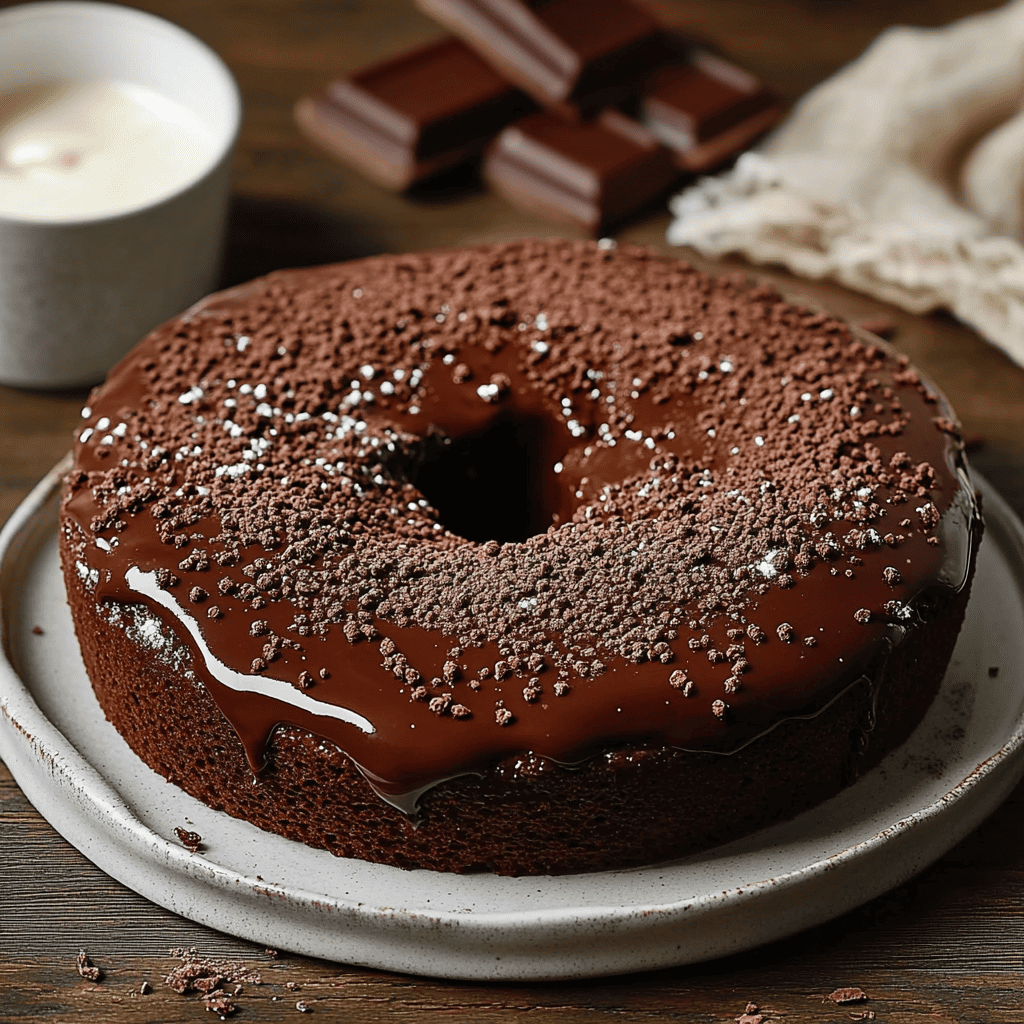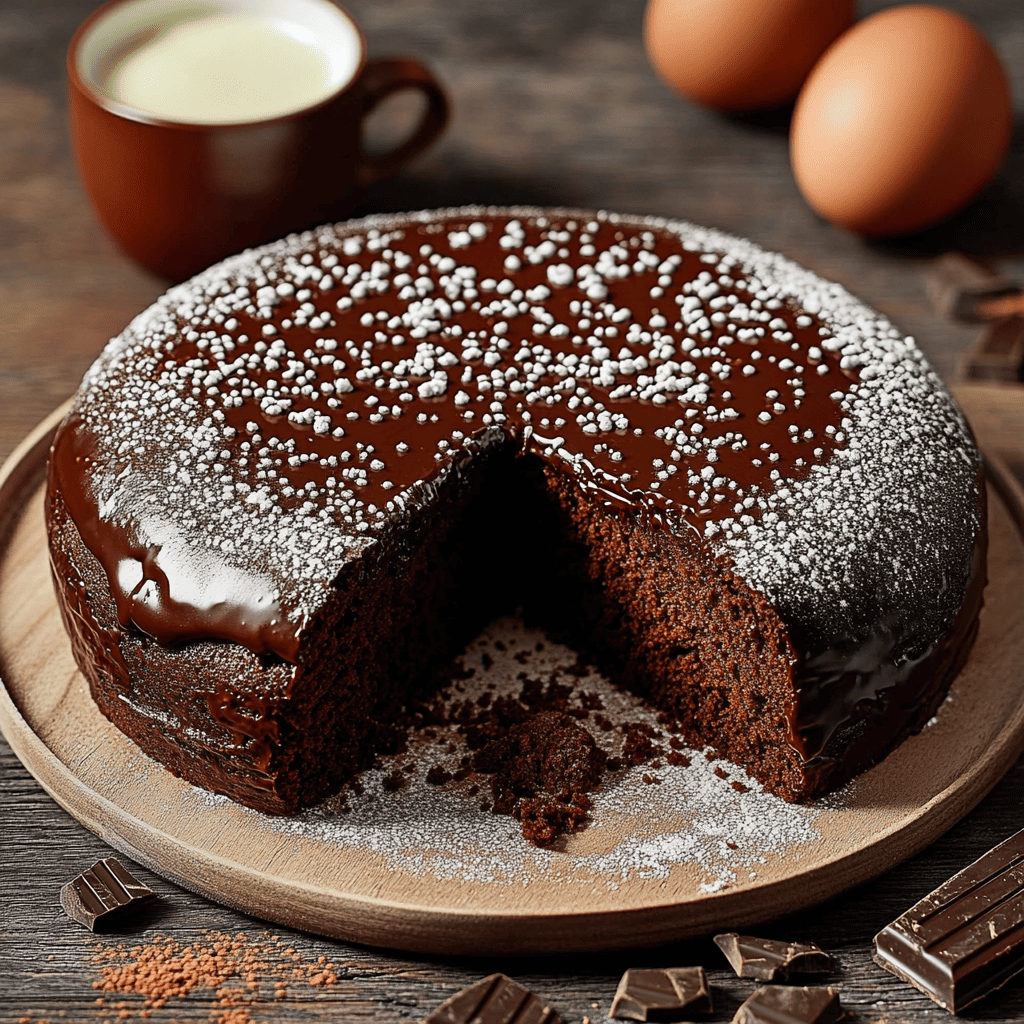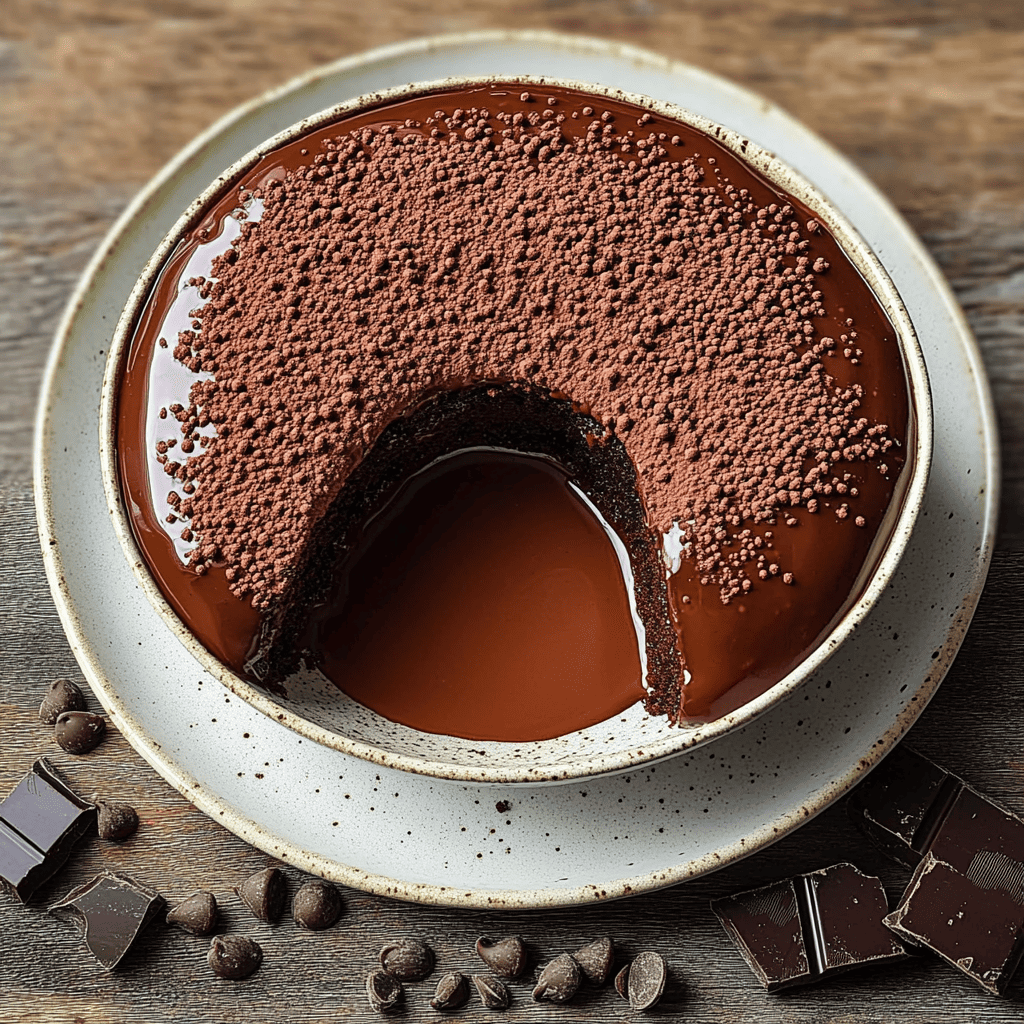Blender Chocolate Cake: An Easy and Delicious Classic to Celebrate Life
Introduction: The Magic of Chocolate Made Easy
Blender Chocolate Cake is an ingeniously simple recipe that allows you to enjoy a moist, fluffy, and flavorful chocolate cake with minimal effort. Blending the ingredients makes preparation quick and hassle-free, ideal for those moments when you crave a delicious dessert without spending hours in the kitchen. Topped with a creamy and glossy chocolate ganache, this cake is perfect for birthdays, celebrations, or just a chocolatey treat. Discover all the secrets of this modern classic!
Detailed History in Spanish: The Evolution of Chocolate Cake and Modern Convenience
The history of chocolate cake is rich and has evolved significantly over time. Chocolate, originally from the Americas, was used by pre-Columbian civilizations primarily in bitter drinks. Its arrival in Europe in the 16th century marked the beginning of its transformation into the sweet treat we know today.
The First Chocolate Cakes: The first chocolate-flavored cakes often used cocoa powder and were denser than modern sponge cakes. The addition of ingredients like butter, eggs, and sugar, along with the development of baking techniques, resulted in softer, fluffier cakes.
The Popularization of Powdered Chocolate: The invention and commercialization of powdered chocolate in the 19th century made it easier to incorporate chocolate flavor into a variety of baked goods, including cakes.
The Convenience of the Blender in the Kitchen: The blender became a popular appliance in the 20th century, facilitating the preparation of many recipes by allowing ingredients to be mixed quickly and efficiently. The idea of using a blender to make chocolate cake batter arose as a way to simplify the process and achieve a delicious result with less effort.
The Blender Chocolate Cake is an example of how modern techniques and the availability of appliances have influenced home baking, making classic recipes more accessible and quicker to prepare.
More Historical Detail: Regional Influences and Adaptations
Digging a little deeper into the history of the Blender Chocolate Cake, we can consider some regional influences and adaptations:
- Practical and Modern Baking: The trend toward simpler and faster recipes has led to the development of methods such as using a blender to make cake batters. This technique eliminates the need to beat ingredients separately and reduces preparation time.
- Regional Adaptations in Ingredients: While the base of the recipe (eggs, sugar, oil, milk, chocolate powder, flour, and yeast) is common, there may be regional variations in the type of oil used, the type of chocolate powder (sweetened or unsweetened), or the addition of other ingredients such as coffee or spices to enhance the flavor.
- Topping Variations: A topping of condensed milk, cream, and hot chocolate powder is a simple and delicious option, but you can also use other types of ganache, butter frosting, or simply dust with powdered sugar, depending on your preferences and ingredient availability.
The popularity of this type of cake has spread to many regions due to its ease of preparation and delicious flavor, making it a modern classic in home baking.

Ingredients & Detailed Preparation
INGREDIENTS – Dough:
- Eggs: 3 units
- Sugar: 1 cup
- Oil: 1 cup (Vegetable, such as sunflower or corn)
- Hot milk: 1 cup (Not boiling)
- Chocolate powder: ½ cup (Unsweetened or with sugar, adjust the amount of sugar in the batter if necessary)
- Wheat flour: 2 cups (All purpose)
- Baking powder (Royal): 1 tablespoon
INGREDIENTS – Topping:
- Condensed milk: 1 box (395 g)
- Cream: 1 small box (200 g) (Whipping cream or half and half)
- Chocolate powder: 2 tablespoons (Or 4 tablespoons of Nescau, which already contains sugar)
- Chocolate sprinkles (optional, for decoration)
Detailed Preparation:
- Preheat the oven and grease the pan: Preheat the oven to 180°C (350°F). Grease and flour a round pan with a hole in the center (savarin or bundt pan) or any other pan of your choice. You can also use baking paper on the bottom to prevent sticking.
- Blend the wet ingredients: In a blender, place the eggs, sugar, oil, hot milk, and hot chocolate powder. Blend for a few minutes until smooth.
- Add the dry ingredients: In a separate bowl, sift the wheat flour and baking powder.
- With the blender off, pour the liquid mixture into the bowl with the dry ingredients. Mix gently with a spatula or hand whisk until all ingredients are well combined and no lumps of flour remain. Do not overmix.
- Pour the batter into the pan: Pour the cake batter into the greased and floured pan.
- Bake: Place the pan in the preheated oven and bake for approximately 30-40 minutes, or until a toothpick inserted in the center comes out clean. Baking time may vary depending on your oven.
- Cooling the cake: Once baked, remove the cake from the oven and let it cool in the pan for about 10-15 minutes. Then, carefully turn it out onto a wire rack and let it cool completely before topping it.
- Prepare the topping: In a small saucepan over low heat, combine the condensed milk, cream, and hot chocolate powder (or Nescau). Cook, stirring constantly, until the mixture is smooth, glossy, and has thickened slightly. This will take a few minutes.
- Topping the cake: Once the cake is completely cool, pour the chocolate topping evenly over the top, allowing it to drip down the sides.
- Decorate (optional): If desired, decorate the cake with chocolate sprinkles.
- Serving: Serve the Chocolate Cake from the blender at room temperature or slightly chilled.
Estimated Preparation Time
- Preparation: 15-20 minutes (blend ingredients, mix dry ingredients)
- Baking: 30-40 minutes
- Cake cooling: 20-30 minutes
- Topping preparation: 5-10 minutes
- Total time: Approximately 1 hour 10 minutes – 1 hour 40 minutes (plus cooling time)
Additional Tips
- Warm milk: Warm milk helps the hot chocolate powder dissolve better and can contribute to the moist texture of the cake.
- Don’t overmix: Once you add the flour, mix only until incorporated to prevent the cake from becoming tough.
- Cooking time: Baking time may vary. Confirm doneness with a toothpick.
- Complete cooling: Make sure the cake is completely cool before topping it so it doesn’t melt too much.
- Topping variations: You can add a teaspoon of butter to the topping for extra shine. You can also use melted semisweet chocolate instead of powdered chocolate.
- Add coffee: To intensify the chocolate flavor, you can add a teaspoon of instant coffee to the liquid mixture.

Frequently Asked Questions
- Can I use another type of milk? Yes, you can use whole milk, semi-skimmed milk, or even plant-based milk. The final texture may vary slightly.
- Can I make this cake without a blender? Yes, you can beat the wet ingredients by hand or with an electric mixer and then add the dry ingredients. The result will be similar, although a blender makes it easier to blend evenly.
- How long does this cake last? If tightly covered at room temperature, it will keep for 2-3 days. In the refrigerator, it can last up to a week.
Texture and Flavor
The texture of this blender chocolate cake is typically moist and fluffy. The crumb is soft and melts easily in the mouth. The chocolate topping provides a creamy, smooth layer that complements the softness of the cake.
The flavor is intensely chocolatey, with a balance between the bitterness of the powdered chocolate and the sweetness of the sugar and condensed milk in the topping. The milk adds richness and smoothness to the overall flavor. It’s a comforting and delicious cake for chocolate lovers.
Consumer Context
This Blender Chocolate Cake is perfect for a variety of occasions:
- Birthday: A classic that can’t be missed at any birthday celebration.
- Family gatherings: Easy to prepare and delicious to share with the family.
- Dessert after a meal: A sweet and satisfying ending.
- Snack: Ideal to accompany a coffee or tea.
- Informal celebrations: Its simplicity does not detract from its flavor or appeal for any type of celebration.
Visual Aspect
The cake has a deep chocolate brown color, glossy thanks to the topping. Its hollowed-out shape allows the frosting to cover the entire surface and drip down the sides attractively. Chocolate sprinkles (if used) add a touch of texture and shine. A slice reveals a dark, fluffy crumb.
Curiosities
- Using oil in cakes: Using oil instead of butter can result in a moister cake, since oil remains liquid at room temperature.
- The yeast reaction: Baking powder reacts with the wet ingredients and the heat of the oven to produce carbon dioxide, which makes the cake rise and become fluffy.
- Name variations: This simple chocolate cake may have different names in different regions, but the blender technique is a hallmark.
Nutritional Value (Estimated per Serving)
Please note that these values are approximate and may vary depending on the serving size and exact amounts of ingredients used.
- Calories: 300-400 kcal
- Protein: 5-7 g
- Fat: 15-20 g (mainly from oil and cream)
- Saturated fat: 8-12 g
- Carbohydrates: 40-50 g (mainly from sugar and flour)
- Sugars: 25-35 g (including condensed milk)
- Fiber: 1-2 g (from chocolate powder and flour)
- Sodium: Variable (depending on yeast and other ingredients)
Additional Benefits and Interesting Facts
- Easy and quick to prepare: Ideal for when you have little time.
- Moist and delicious texture: Generally liked by everyone.
- Common Ingredients: Most ingredients are usually available at home.
Other Information
- Storage: Store the cake covered at room temperature or in the refrigerator.
- Presentation: You can serve it alone, with ice cream, fresh fruit or more chocolate sauce.

Conclusion: A Chocolate Classic Within Reach of Your Blender
Blender Chocolate Cake proves that you don’t need to be a baking expert or have sophisticated equipment to enjoy a delicious homemade chocolate cake. Its simplicity of preparation, combined with its intense flavor and moist texture, make it a winning choice for any occasion. Go ahead, fire up your blender and create this modern classic that’s sure to sweeten your special moments. Enjoy!

